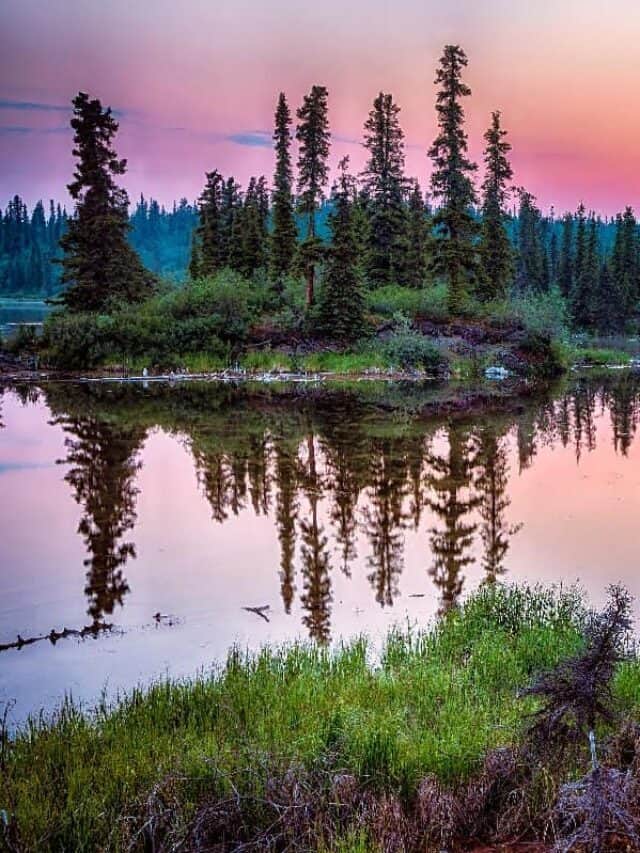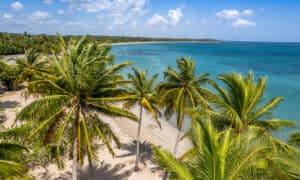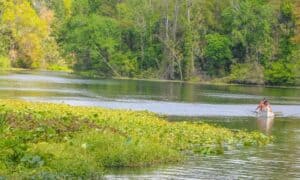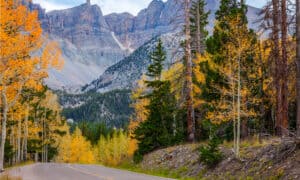The United States is famous for its national park system. This system is designed to safeguard pristine areas around the country so they can be appreciated in the future. Whether you’re an urbanite that wants to learn more about the beauty of the country or someone planning a trip, knowing about the largest national parks in the United States can be useful.
We have come up with a list of the 15 biggest national parks in the U.S. You should take a look at each. Learn where they’re located, how large they are, and some cool features about them by reading on!
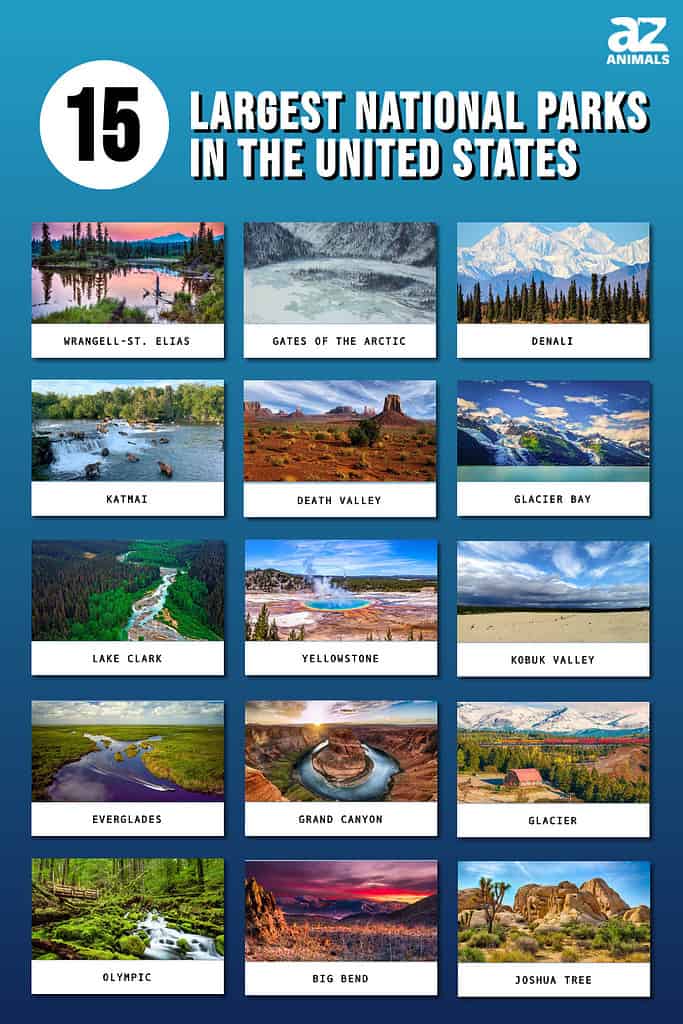
What is a National Park?
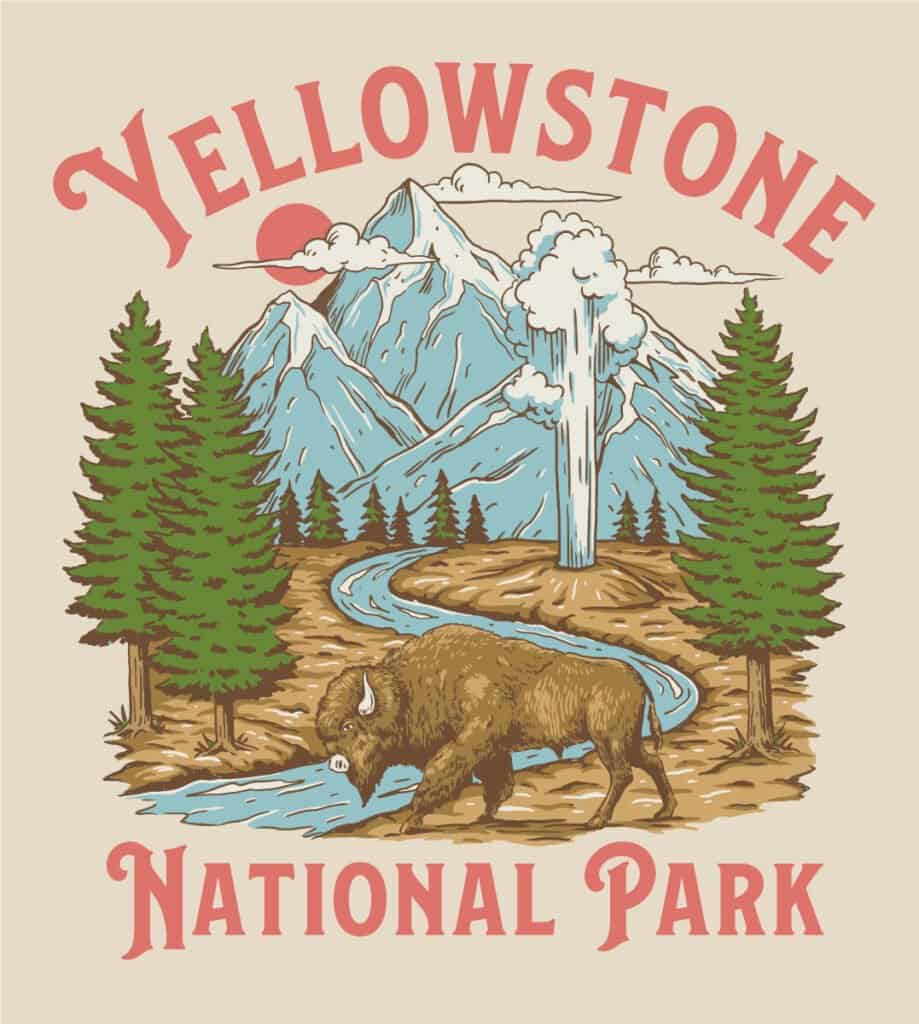
©Michael Hinkle/Shutterstock.com
A national park is an area in the U.S. that is designated for protection by the government. These parks are overseen by the National Park Service. These parks are spread throughout the continental U.S. and even into Alaska. Now that you know what a national park is, you can appreciate how much space they take up in the country. Now it’s off to the list and at the end, you will discover what the largest national park in the US is.
The 15 Largest National Parks in the United States
Below you’ll find the 15 largest national parks ranked by their total acreage. You’ll discover parks mostly spread across the western United States, with the largest in Alaska!
15. Joshua Tree (795,155 acres)
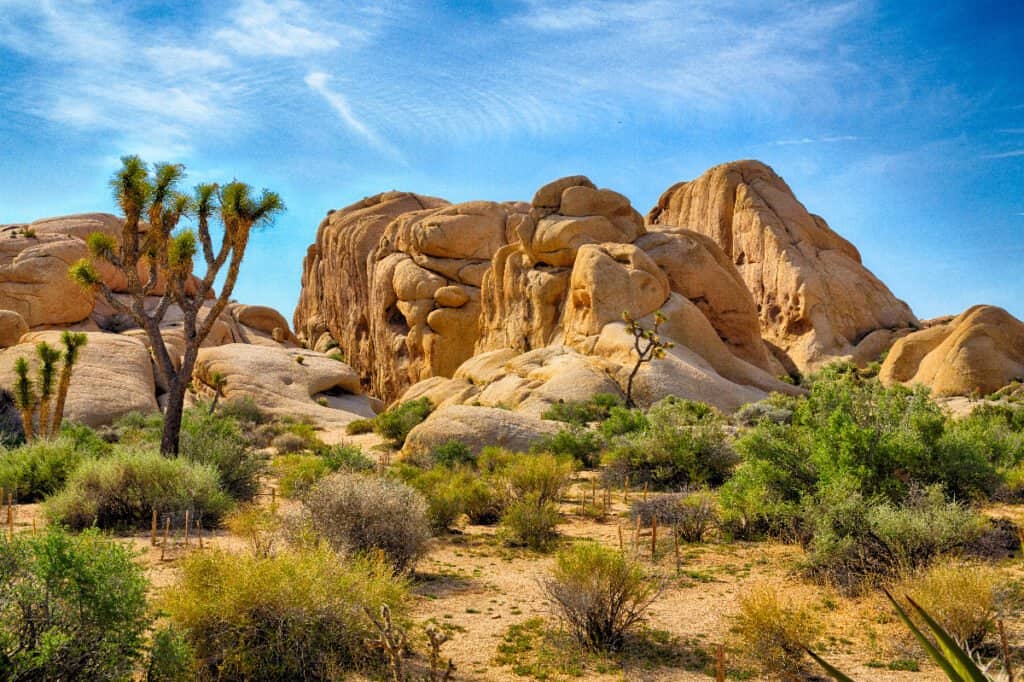
The Joshua Tree National Park has many famous sites, like the Old Woman Rock
©Gary C. Tognoni/Shutterstock.com
Joshua Tree National Park is located in the Mojave Desert, and it is famous for the trees that give the park its name. The southern California area is famous for having many unique sites like the Old Woman Rock as well as its great space for astronomy. Few places are as remote as this park, so the dark skies and lack of light pollution lend themselves to great studies of the night sky. Still, much of this area has unforgiving terrain.
14. Big Bend (801,163 acres)
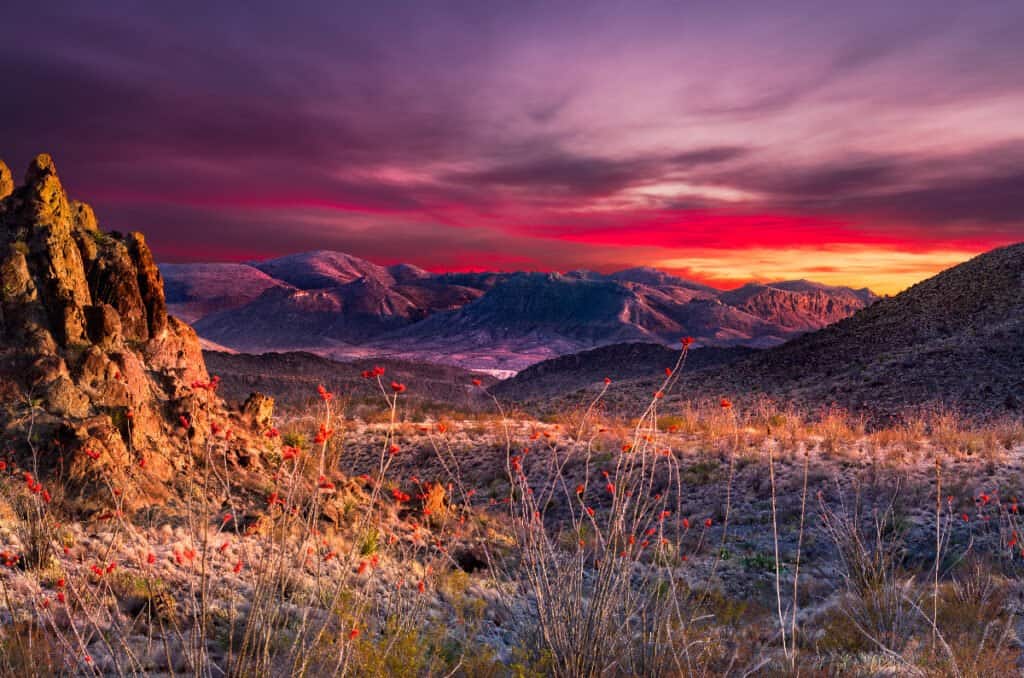
The name for Big Bend comes from the large river bend
©Dean Fikar/Shutterstock.com
Texas’ Big Bend National Park is named for the bend in the Rio Grande. The Chihuahuan Desert makes up a large portion of the park. This is not necessarily the easiest place to hike. This area is perfect for scenic drives since it is home to long roads, mountainous areas, and open fields. This national park is known for hiking and backpacking, but it is also one of the least visited national parks in the lower 48 states.
13. Olympic (922,649.41 acres)

The Olympic National Park was originally called Mount Olympus
©kan_khampanya/Shutterstock.com
The Olympic National Park is located in northwestern Washington, on the Olympic Peninsula. The park was originally called the Mount Olympus National Monument by Teddy Roosevelt. However, it was later designated a national park under his relative Franklin D. Roosevelt. This national park is large enough to have snowy mountains, shores on the west coast, rainforests, and alpine forests. It’s amazing how many different facets of nature you can take in here!
12. Glacier Park (1,013,125 acres)
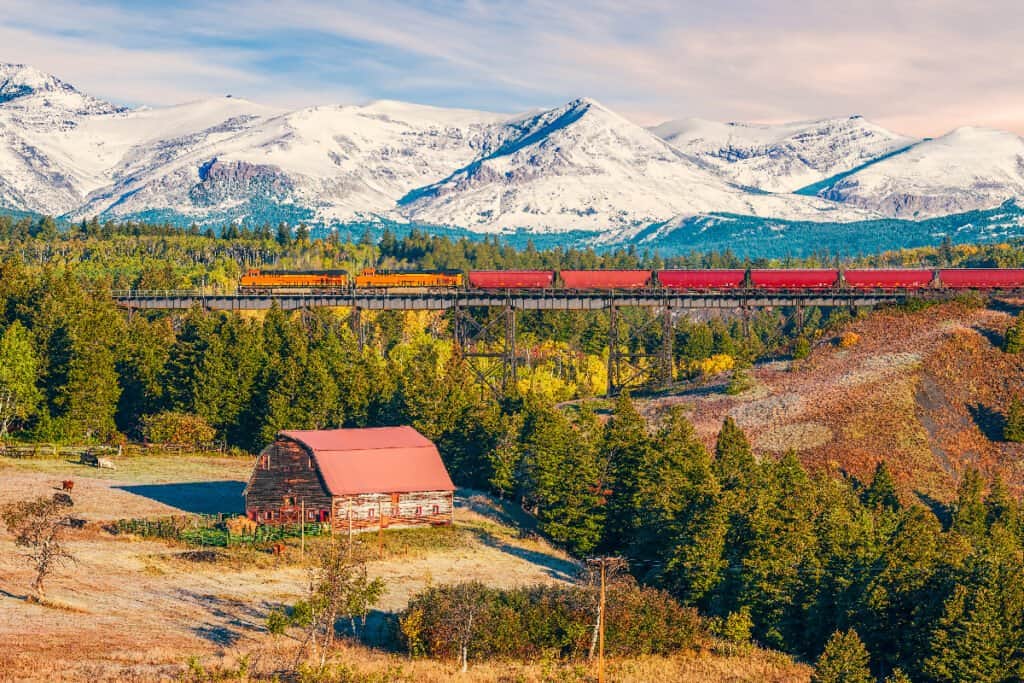
Glacier National Park is home to many rare animals
©VIKVAD/Shutterstock.com
Located on the border between Montana and Canada, Glacier National Park is a fairly large park that is famous for its biodiversity. This area is very remote, mountainous, and geologically significant. This park is home to grizzly bears, moose, wolverines, and much more. The ecosystems in the area vary a lot, with some of the park being tundra and other parts being open prairies. Glacier Park is another astronomer’s delight!
11. Grand Canyon (1,201,647 acres)

Grand Canyon National Park is known around the world
©Sergii Figurnyi/Shutterstock.com
The Grand Canyon National Park is one of the most famous national parks in the United States. Located in Arizona, the area is known for its massive canyon in the area as well as for its great views. This is one of the most highly visited national parks in the entire United States. This area is good for photographers, pilots, and hikers alike!
10. Everglades (1,508,938 acres)
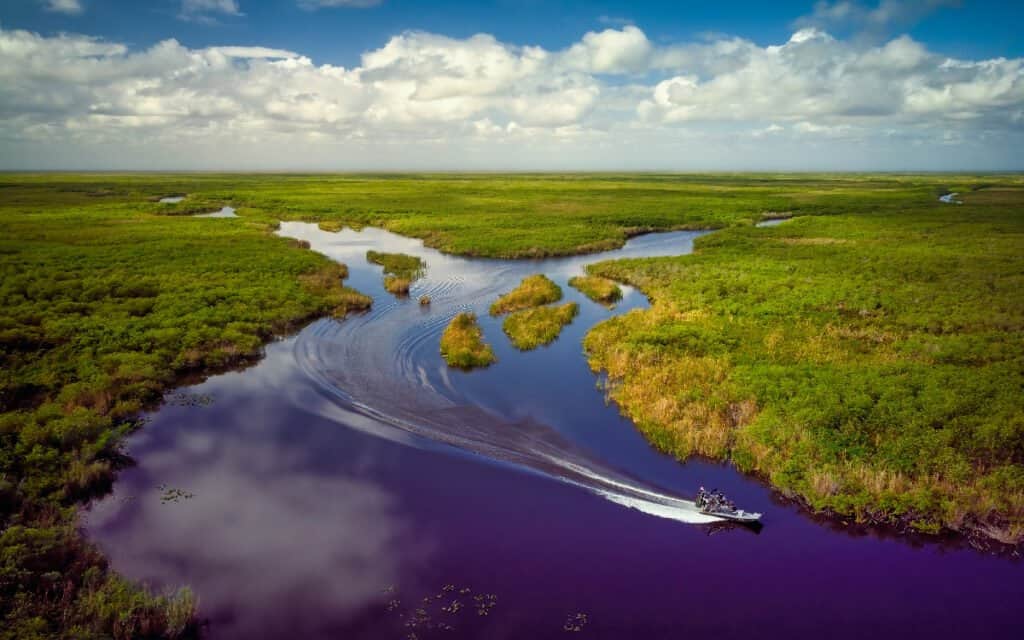
The Everglades is the biggest tropical wilderness in the U.S.
©iStock.com/Robert DelVecchio – OcuDrone
The Everglades National Park is famous for being a massive tropical wilderness in southern Florida. The area is home to endangered species like the American crocodile and the Florida panther. Unfortunately, it’s also home to invasive species like Burmese pythons. Many efforts have been planned or taken to help manage the park throughout the year and increase the protection it offers the land and animals. This area is known as a dark skies site which makes it great for astronomy, camping, and hiking.
9. Kobuk Valley (1,750,716.16 acres)

Kobuk Valley is home to natives called the Inupiat
©iStock.com/46travels
The Kobuk Valley National Park is located in northwestern Alaska. The area has been inhabited by humans for at least 12,500 years, and the current residents are known as Inupiat. Kobuk Valley can get incredibly cold as a Subarctic climate, reaching temperatures as low as -40oF. The land is home to many large mammals like caribou, wolves, and various bears.
8. Yellowstone (2,219,790.71 acres)
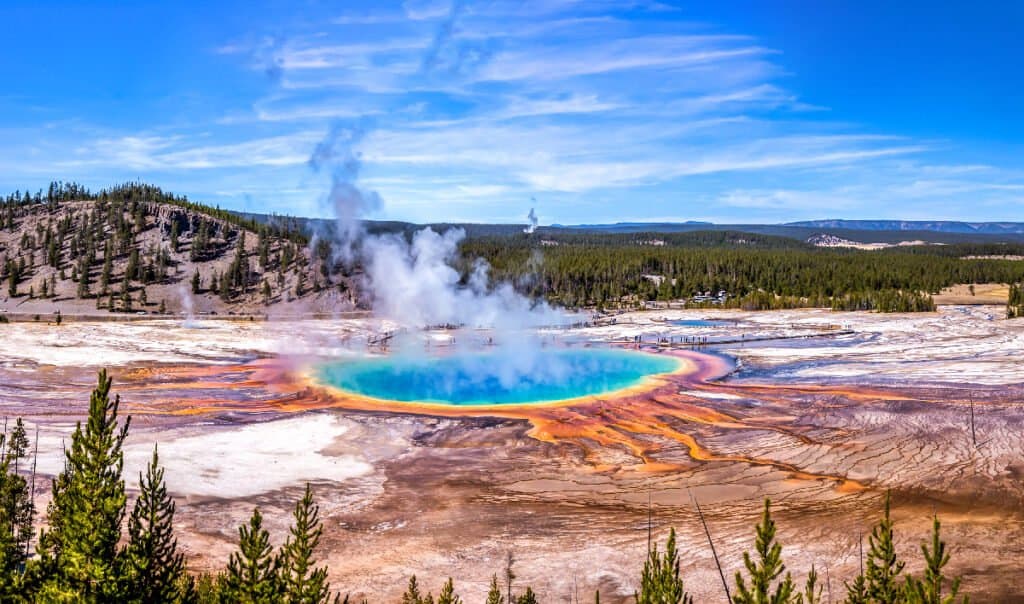
Yellowstone’s volcano could be a potential source of geothermal power rather than a danger
©Lillac/Shutterstock.com
Located in parts of Idaho, Montana, and Wyoming, Yellowstone National Park is one of the most famous parks in the United States. It’s well-known for being located on the Yellowstone Caldera, a supervolcano that rightly makes people nervous because of its potential destructive power. However, the park is better known for its hot springs and geysers. Moreover, the abundant wildlife makes this location a pleasure to visit. Yellowstone is the second-most frequented national park in the U.S.
7. Lake Clark (2,619,816.49 acres)

The Lake Clark National Park has several volcanoes within it
©Malachi Jacobs/Shutterstock.com
Lake Clark is another geologically significant national park that is in central-south Alaska. The area has four active volcanoes located within its borders. This national park is perfect for fishing, rafting, hiking, and more. The area is covered in pristine waters, mountains, and even a temperate rainforest.
6. Glacier Bay (3,223,383.43 acres)
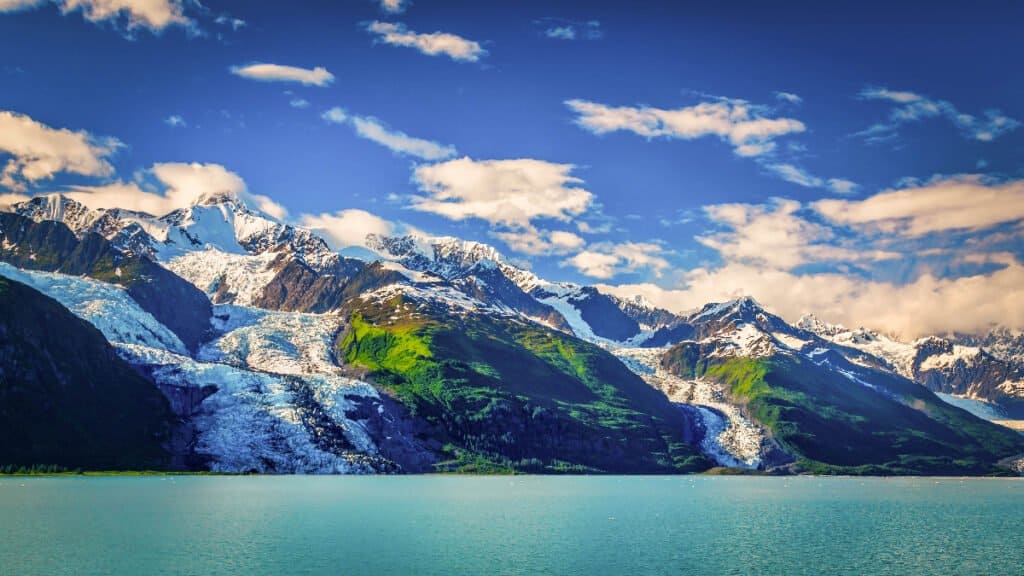
Glacier Bay’s glaciers have receded since the park was identified
©aarbois/Shutterstock.com
Another national park in Alaska, Glacier Bay National Park is located in the far east. In fact, it’s close to the Canadian border and below the vast majority of Alaska’s mass. This park was once covered in glaciers. Yet, some of them have since receded, but the name stands. Still, this park has interesting ecosystems that range from tundra to hemlock forests. The area is home to a variety of different animals, too. This national park is most popular as a cruise destination where people take in the natural beauty far from shore.
5. Death Valley (3,408,406.73 acres)
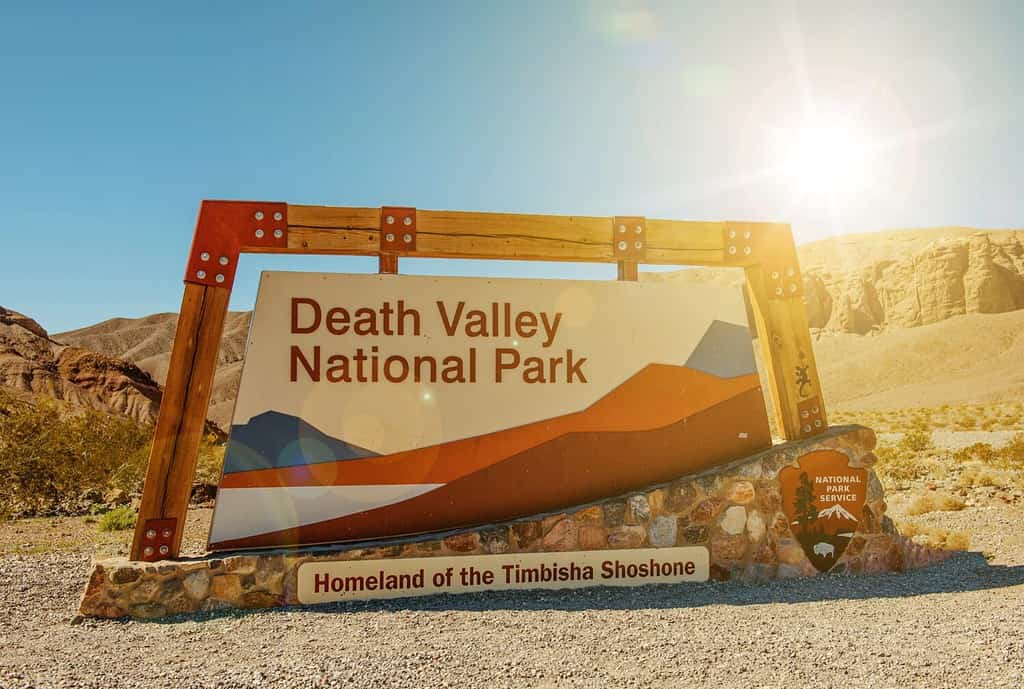
Death Valley is hot, dangerous, and beautiful
©Virrage Images/Shutterstock.com
As the name suggests, Death Valley National Park is about as inhospitable as it gets. This park spans the border between California and Nevada. Also, it’s known for being the driest and hottest national park in the entire country as well as North America. The highest temperature recorded in this arid, desert environment was 134oF.
4. Katmai (3,674,529.33 acres)

The Katmai National Park has volcanoes that have recently erupted
©iStock.com/Mark Kostich
The Katmai National Park is located on the Alaska Peninsula which is famous for its various volcanoes, including Mount Katmai and Trident Mountain. A part of this preserve is called the Valley of Ten Thousand Smokes. That valley is an ash flow from an eruption of Novarupta in 1912. Robert Griggs noted that the area had thousands of fumaroles that were venting, making it look like the entire area was smoking. Aside from volcanoes, the area is famous for the presence of grizzly bears.
3. Denali (4,740,911.16 acres)

Denali is the name of the tallest mountain in North America
©evenfh/Shutterstock.com
The Denali National Park derives its name from Denali, the tallest mountain in North America. This Alaskan national park is a popular tourist attraction, bringing in hundreds of thousands of visitors. The park is famous for its incredible wilderness, including beautiful glaciers, mountain ranges, and forests. People come to Denali National Park to take in true nature, watch dog sledding, and see wildlife.
2. Gates of the Arctic (7,523,897.45 acres)

Gates of the Arctic lives up to its name
©iStock.com/joshanon
As the name suggests, Gates of the Arctic National Park and Preserve is a national park that is north of the Arctic Circle. This area is over 2 million acres larger than Denali, and it is incredibly remote. In fact, there are no roads in the park. Also, there are no support structures from the National Park Service. That is part of the reason why it is so rarely visited, and that might not be a bad thing in terms of maintaining the pristine nature of the wilderness.
1. Wrangell-St. Elias (8,323,146.48 acres)
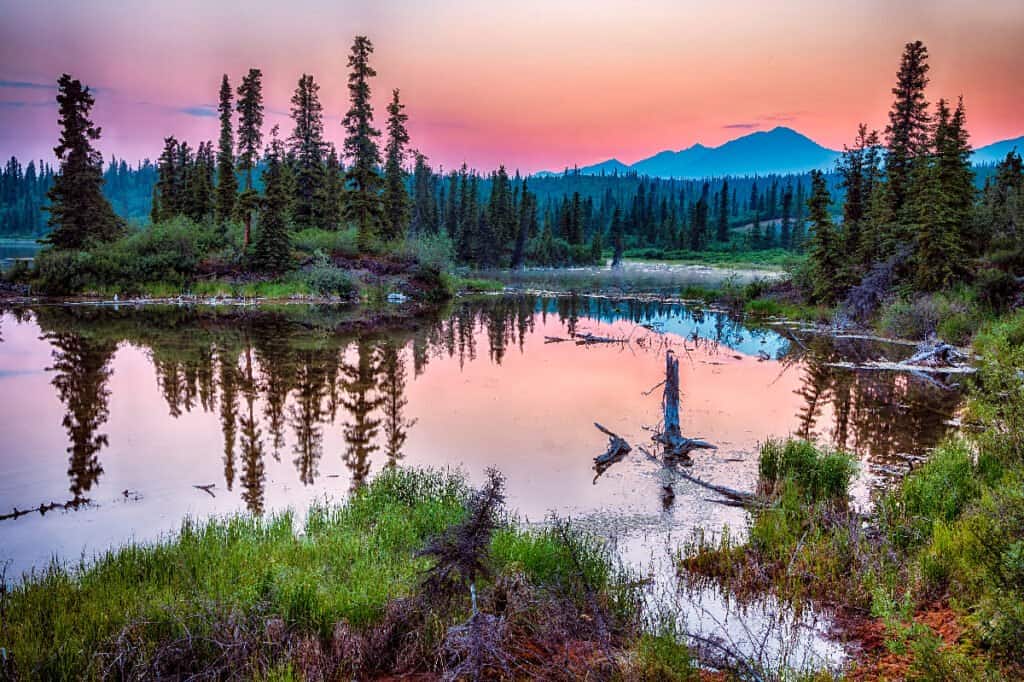
This national park is so large that it has all sorts of different ecological zones
©iStock.com/troutnut
The Wrangell-St. Elias National Park and Preserve is the biggest national park in the country. It was established in 1980 and is absolutely massive. At over eight million acres, it is several times larger than the incredibly large Yellowstone and Death Valley National Parks. This Alaskan park is accessible through Anchorage, but it is somewhat infrequently visited because of its remoteness. It has high mountains, forests, ice fields, glaciers, numerous volcanoes, and vast numbers of wild animals. In addition, this area is important to geological studies. The Wrangell-St. Elias National Park is beautiful, dangerous, and wild!
What Was the First National Park Made in the United States?

Before Teddy Roosevelt made an impact on the system, Grant created Yellowstone National Park
©Susanne Pommer/Shutterstock.com
The first national park was Yellowstone National Park, and it was deemed such in 1872 under President Ulysses S. Grant.
Final Thoughts on the Largest National Parks in the United States

National parks are very important in the United States and abroad
©sirtravelalot/Shutterstock.com
National parks serve an important purpose in the United States. They protect lands from overdevelopment and overpopulation. As we’ve seen, many of the largest national parks in the United States are in the west, especially Alaska. The east coast only has one large park, and that’s Everglades.
Hopefully, more efforts will be taken to protect lands all over the U.S., especially as industry and population both continue to increase in the country.
Read about the best national parks in the Northeast.
It is important to note that drones aren’t allowed in national parks.
Summary of the 15 Largest National Parks in the United States
Let’s take one last look at the U.S. national parks that made the cut for being the largest in the nation.
| Rank | National Park | Acreage |
|---|---|---|
| 1 | Wrangell-St. Elias | 8,323,146.48 acres |
| 2 | Gates of the Arctic | 7,523,897.45 acres |
| 3 | Denali | 4,740,911.16 acres |
| 4 | Katmai | 3,674,529.33 acres |
| 5 | Death Valley | 3,408,406.73 acres |
| 6 | Glacier Bay | 3,223,383.43 acres |
| 7 | Lake Clark | 2,619,816.49 acres |
| 8 | Yellowstone | 2,219,790.71 acres |
| 9 | Kobuk Valley | 1,750,716.16 acres |
| 10 | Everglades | 1,508,938 acres |
| 11 | Grand Canyon | 1,201,647 acres |
| 12 | Glacier | 1,013,125 acres |
| 13 | Olympic | 922,649.41 acres |
| 14 | Big Bend | 801,163 acres |
| 15 | Joshua Tree | 795,155 acres |
The photo featured at the top of this post is © iStock.com/troutnut
FAQs (Frequently Asked Questions)
What are the best Midwest national parks?
Some of the best national parks to visit in the Midwest include Cuyahoga Valley National park in Ohio, Hot Springs National Park, Badlands National Park, and Mount Rushmore National Park.
What are the best national parks to visit in the west?
The western United States is home to 40 of the country’s 63 national parks. The best national parks to visit in the west include Mount Rainier National Park, Glacier National Park, Yellowstone National Park, and Grand Teton National Park.
What are the best national parks to visit in summer?
Summer is the busiest season for national parks and a number that are quite cold during the rest of the year warm up to a point that makes them accessible to much wider audiences.
- The best national parks to visit in August include Grand Teton National Park, Great Basin, Denali, and Acadia National Park.
What are the best national parks to visit in winter?
Winter means national parks are less crowded. If you’re a lover of winter activities plenty of national parks have trails for cross-country skiing and recreational activities like sledding. If you’re more comfortable staying out of the snow, some southern national parks are at their most comfortable temperatures during the winter.
- The best national parks to visit in December include Death Valley, Everglades, and White Sands National Parks.
What are the best national parks to visit in fall?
During fall national parks are an ideal spot to watch the colors of nature shift and enjoy cooling weather. Hiking can be extremely pleasant in less humid weather while heavy snow won’t have reduced accessibility in most parks.
- The best national parks to visit in October include Cuyahoga, Shenandoah, and Mount Rainier National Park.
Thank you for reading! Have some feedback for us? Contact the AZ Animals editorial team.



